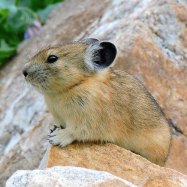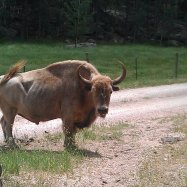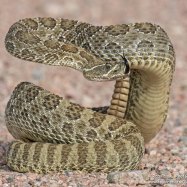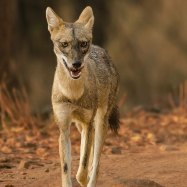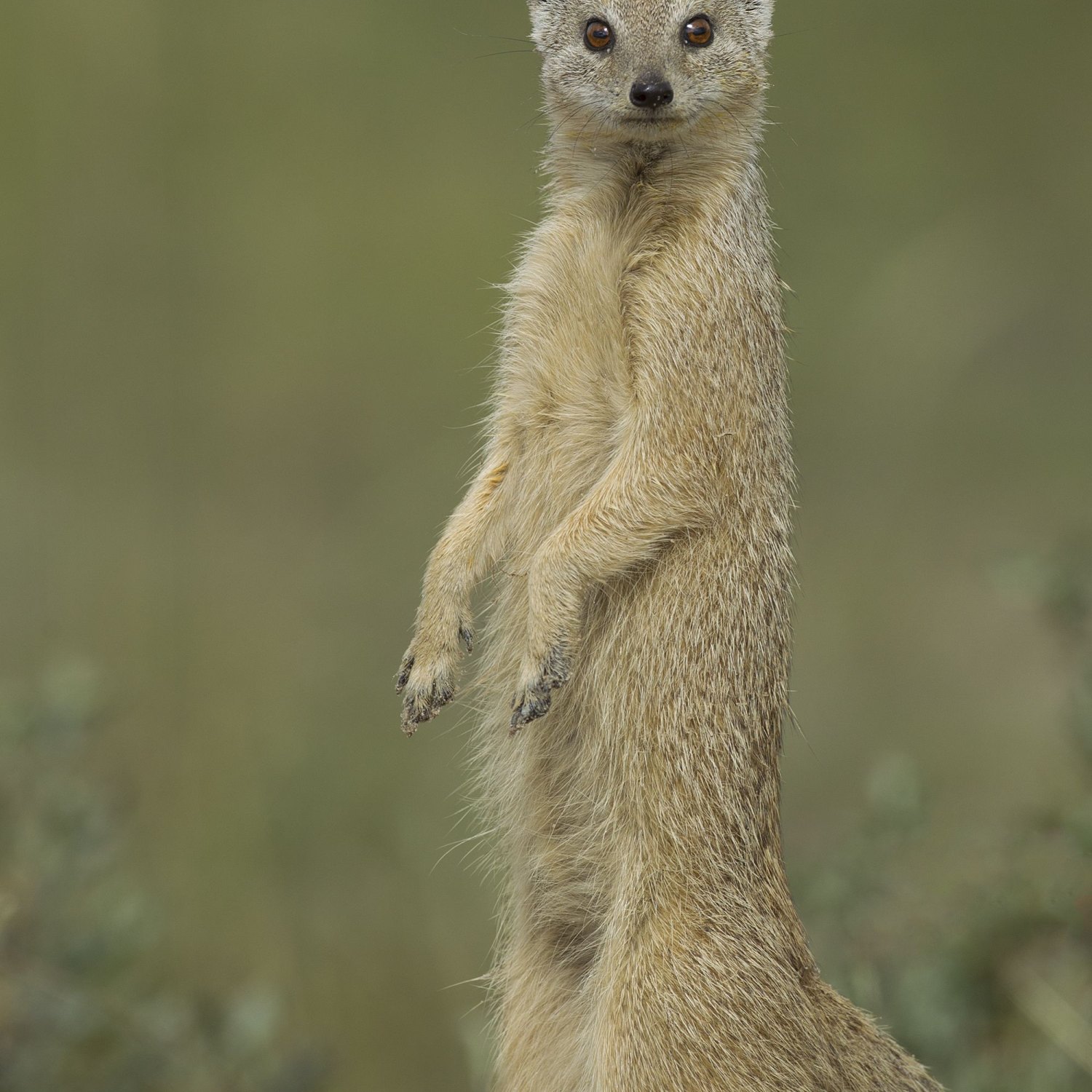
Mongoose
Between 7 and 25 inches
The Mongoose is a fascinating animal found in various countries in Africa, Asia, and southern Europe. With a slender and elongated body, bushy tail, and ranging from 7 to 25 inches in length, this member of the Herpestidae family is known for its agility and ability to take down venomous snakes. Next time you spot a Mongoose, appreciate its impressive qualities as it roams the wilderness. #Mongoose #Wildlife #Africa #Asia #Europe
Animal Details Summary:
Common Name: Mongoose
Kingdom: Animalia
Habitat: Various habitats including forests, savannas, grasslands, and scrublands
The Fascinating Life of the Mongoose: A Carnivorous Creature Found Across Africa, Asia, and Southern Europe
In the vast lands of Africa, Asia, and Southern Europe, there is a small but mighty creature known as the mongoose. This small carnivorous animal belonging to the Herpestidae family has captured the fascination of many due to its unique characteristics and adaptability to various habitats.Scientifically known as Herpestes, the mongoose is a member of the Animalia kingdom, Chordata phylum, Mammalia class, and Carnivora order. Its name is derived from the Marathi word "mangus," meaning "mongoose Mongoose." This fascinating creature is commonly referred to as a "mongoose" in both its scientific and common names.
The mongoose's diverse geographical distribution has earned it the reputation of being a highly adaptable creature, able to thrive in a variety of habitats, including forests, savannas, grasslands, and scrublands. It is also known to make its home near human settlements, making it a familiar sight in many communities.
Physical Characteristics
One of the most distinctive features of the mongoose is its coloration. While the color may vary depending on the species, most mongooses are brown or gray with lighter underparts, making them blend in seamlessly with their surroundings. This camouflage helps them avoid being spotted by predators while hunting or foraging for food.In terms of body shape, the mongoose's slender and elongated body makes it well-suited for quick movements and navigating through narrow spaces in search of prey. Their legs are also relatively short, but this doesn't stop them from being incredibly agile and swift. They can often be seen darting around, chasing after their prey with remarkable speed Mole Crab.
The mongoose's bushy tail serves several purposes; it is used for balance during high-speed chases, communication between pack members, and as insulation during colder climates. Some species also use their tail to protect their nose while digging for food.
Feeding Habits
Being a member of the Carnivora order, the mongoose's diet is primarily composed of meat. These creatures have a diverse palate and feed on a wide range of prey, including insects, small rodents, reptiles, and even birds and eggs. They are also known to target animals larger than themselves, such as snakes and even scorpions.What makes the mongoose stand out in its feeding habits is its adaptability to kill and eat poisonous animals. It has developed a unique resistance to venom, making it immune to the bites of many venomous creatures, including snakes, spiders, and scorpions. This ability to hunt and consume a variety of prey makes the mongoose one of nature's top predators.
Family and Social Habits
The mongoose is a highly social creature, living in groups called "packs." These packs can consist of several individuals, and they work together to hunt and protect their territory. Within the pack, there is an established hierarchy, with the dominant individual being the alpha male or female.One of the most notable behaviors of the mongoose is its ability to work together as a team. When hunting, a pack will surround their prey, using coordinated movements to confuse and overpower it. This teamwork and cooperation make them successful hunters and ensure the survival of the entire pack.
In terms of reproduction, mongooses are polygamous, meaning that an alpha male will have multiple females as mates within the pack. Females give birth to litters of two to four pups and are known to be fiercely protective of their young. Young mongooses stay with their mothers until they are old enough to join the pack's hunting and social activities.
Threats and Conservation Status
While the mongoose may seem like an invincible creature with its ability to ward off venom and hunt various prey, it is still at risk of threats and predators. Its primary predators include larger carnivorous animals such as snakes, birds of prey, and even humans who consider them to be agricultural pests.Additionally, the mongoose's adaptability has also made it susceptible to habitat loss and fragmentation, especially in areas where human development is prominent. This loss of habitat can disrupt the pack's social structure and make them more vulnerable to predators.
Currently, the mongoose is listed as a species of "least concern" on the International Union for Conservation of Nature (IUCN) Red List. However, it is protected under various national laws in countries where it is found, such as India and Uganda. The main threats faced by the mongoose are human activities such as poisoning, road accidents, and persecution.
The Role of Mongooses in Various Cultures
Across Africa, Asia, and Southern Europe, the mongoose is a significant cultural symbol, often associated with various beliefs and stories. In Hindu mythology, the mongoose is considered a sacred animal, believed to be a guardian against snakes and evil spirits. As such, it is often depicted in Hindu art and is present in Hindu ceremonies and rituals.In some African cultures, the mongoose is revered as a symbol of bravery and cunningness. Folklore tales tell of how the mongoose outwitted and defeated larger predators, making it a popular and respected creature in these communities.
In Southern Europe, the mongoose is associated with the Greek god Hermes, known for his speed and agility. This connection is due to the mongoose's quick movements and sharp reflexes, which have earned it the nickname "the Hermes of the animal kingdom."
The Impact of Mongooses on Agriculture
The mongoose's adaptability and fearless nature have also made it a valuable asset in controlling certain agricultural pests. In many countries, farmers have intentionally introduced mongooses into their fields to control rodent populations, which can cause significant damage to crops.While this may seem like a positive outcome, the introduction of mongooses to new areas can also have negative consequences. In some regions, mongooses have become invasive species, outcompeting and endangering other native species.
To combat this issue, many countries have implemented strict laws and regulations regarding the import and export of mongooses, ensuring that they are not introduced into new areas without careful consideration.
The Role of Mongooses in Research and Technology
Apart from their cultural significance and impact on agriculture, mongooses have also been a subject of interest in scientific research and technology. Due to their unique resistance to venom, mongooses have been studied to develop antivenom for snakebites and other venomous creatures.Additionally, the way mongooses move and hunt has also inspired robotic technology, with researchers looking to replicate their agility and quick reflexes in machines.
In Conclusion
In conclusion, the mongoose is a small but mighty creature that has captured the fascination of many. From its unique physical characteristics and abilities to its social habits and cultural significance, this carnivorous creature has made a mark on various aspects of life.While the mongoose may face threats and challenges, it continues to thrive in its various habitats and serve a vital role in balancing ecosystems. As such, it is essential to protect and preserve these remarkable creatures for future generations to appreciate and admire. After all, there is nothing quite like the cunning and ferocious nature of the mongoose, making it a true marvel of the animal kingdom.

Mongoose
Animal Details Mongoose - Scientific Name: Herpestes
- Category: Animals M
- Scientific Name: Herpestes
- Common Name: Mongoose
- Kingdom: Animalia
- Phylum: Chordata
- Class: Mammalia
- Order: Carnivora
- Family: Herpestidae
- Habitat: Various habitats including forests, savannas, grasslands, and scrublands
- Feeding Method: Carnivorous
- Geographical Distribution: Africa, Asia, and southern Europe
- Country of Origin: India
- Location: Found in various countries in Africa, Asia, and southern Europe
- Animal Coloration: Varies depending on the species, but commonly brown or gray with lighter underparts
- Body Shape: Slender and elongated body with a bushy tail
- Length: Between 7 and 25 inches
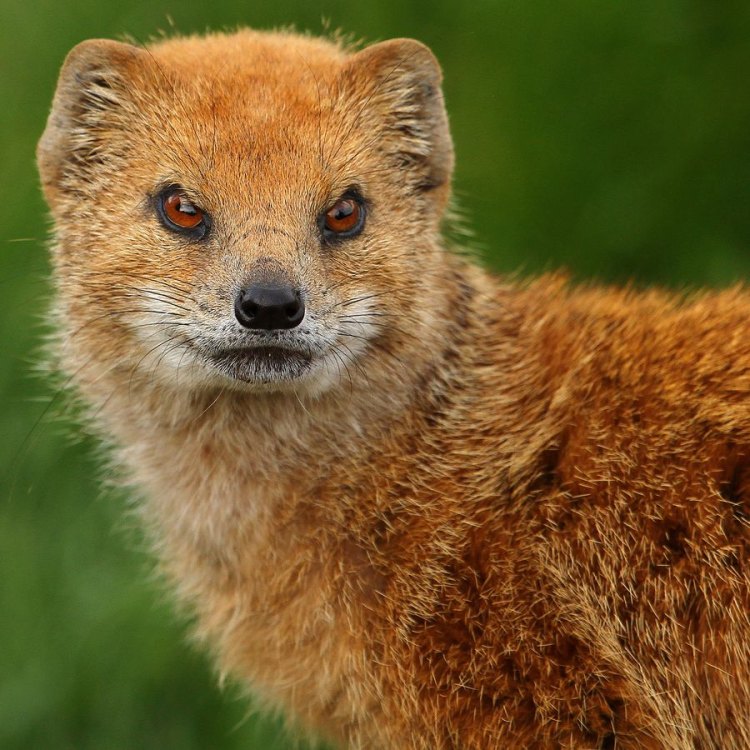
Mongoose
- Adult Size: Varies depending on the species, but typically between 9 and 26 inches in length
- Average Lifespan: Around 6 to 10 years in the wild
- Reproduction: Sexual
- Reproductive Behavior: Polygamous, with males mating with multiple females
- Sound or Call: Can produce a variety of vocalizations including chirps, growls, and hisses
- Migration Pattern: Non-migratory
- Social Groups: Varies depending on the species, but can be solitary or live in family groups
- Behavior: Diurnal and primarily active during the day
- Threats: Habitat loss, hunting, and competition with invasive species
- Conservation Status: Varies depending on the species, with some species being classified as vulnerable or endangered
- Impact on Ecosystem: Mongoose play an important role in controlling rodent populations
- Human Use: Some species of mongoose are kept as pets or used for snake control in certain areas
- Distinctive Features: Sharp claws, agile movements, and strong jaw muscles for capturing prey
- Interesting Facts: Mongooses are known for their ability to fight and kill venomous snakes
- Predator: Mongooses have few natural predators, but they can be preyed upon by large birds of prey and larger carnivores
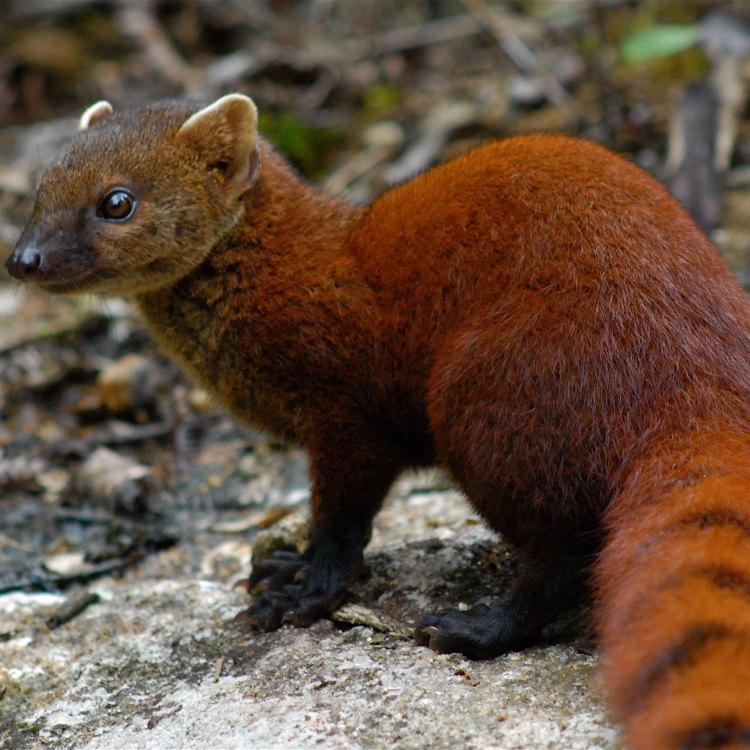
Herpestes
The Mongoose: A Fascinating and Misunderstood Carnivore
The mongoose is a small but mighty carnivorous mammal that is often overlooked in the animal kingdom. With sharp claws, agile movements, and strong jaw muscles, these creatures are skilled hunters and can hold their own against larger predators. However, they are often misunderstood and face various threats that put them in danger. In this article, we will delve into the unique features and behaviors of the mongoose, highlighting its importance in ecosystems and the impact it has on humans PeaceOfAnimals.Com.Size and Lifespan
The size of a mongoose can vary significantly depending on the species. Some species, like the dwarf mongoose, can reach an adult size of only 9 inches, while others, like the Egyptian mongoose, can grow up to 26 inches in length. Most species fall within the range of 9 to 26 inches. However, their size does not determine their strength and agility.
In the wild, mongooses have an average lifespan of 6 to 10 years, but this can vary depending on the species and their environment. In captivity, they have been known to live up to 20 years. Despite their relatively short lifespan, mongooses play a vital role in their ecosystems during their time on Earth.
Reproduction and Behavior
Mongooses are sexually reproductive and have a polygamous mating system, where one male can mate with multiple females. This allows for genetic diversity within the species and increases their chances of survival Mexican Eagle. During the mating season, males can become aggressive towards each other, often resulting in fights for dominance.
Social groups among mongooses vary depending on the species. Some species, like the yellow mongoose, live in family groups of up to 20 individuals, while others, like the meerkat, live in close-knit colonies with a complex social hierarchy. However, some species are solitary and only interact with others during mating season.
Behaviorally, mongooses are diurnal, meaning they are primarily active during the day. They have adapted to living in a wide range of habitats, from forests to grasslands, and are excellent climbers and swimmers. They communicate with each other through a variety of vocalizations, including chirps, growls, and hisses.
Threats and Conservation Status
Mongooses face various threats in the wild, including habitat loss, hunting, and competition with invasive species. They are often considered pests by farmers because they prey on domestic chickens and eggs. In some areas, mongooses are also hunted for their fur or killed as part of traditional medicine practices.
The conservation status of mongooses varies depending on the species. Some, like the Indian gray mongoose and the small Indian mongoose, are listed as "Least Concern" by the International Union for Conservation of Nature (IUCN). However, others, like the Angolan slender mongoose and the Liberian mongoose, are classified as either "Vulnerable" or "Endangered."
Impact on Ecosystems
Despite often being seen as a nuisance, mongooses play a crucial role in many ecosystems. They are opportunistic hunters, feeding on a variety of prey such as rodents, snakes, insects, and even small birds. This helps to control rodent populations, which can cause damage to crops and spread diseases.
Another interesting fact about mongooses is their ability to fight and even kill venomous snakes. Their agility, speed, and immunity to some snake venoms make them ideal predators of these dangerous creatures. Some species, like the Indian gray mongoose, are even resistant to cobra venom, allowing them to take down these deadly snakes without harm.
Human Use and Interaction
Some species of mongooses, such as the Egyptian mongoose, are kept as pets in certain parts of the world. They are also used for snake control in areas where venomous snakes pose a threat to humans or livestock. However, this practice can have adverse effects on the local ecosystem, as the introduction of a non-native species can disrupt the natural balance.
In some countries, traditional medicine practices use mongooses for their perceived healing properties. This has resulted in the illegal trafficking of these animals, further endangering certain species and populations.
Distinctive Features
Mongooses have a few distinctive features that make them stand out in the animal kingdom. Their sharp claws, combined with their agile movements, make them excellent predators. They also have strong jaw muscles, allowing them to capture and kill their prey effectively.
Another unique feature of mongooses is their ability to stand up on their hind legs to survey their surroundings. They do this to get a better view, as well as to communicate with other members of their social group. This behavior has earned them the nickname "meerkats of Africa."
Predators
Due to their quick and agile nature, mongooses have few natural predators. However, they can fall victim to larger birds of prey, such as eagles and hawks, and larger carnivores like hyenas and leopards. They are also vulnerable to being killed as bycatch in traps set for larger animals, further highlighting the need for conservation efforts.
In conclusion, the mongoose is a fascinating and often misunderstood carnivore that plays a vital role in many ecosystems. With their sharp claws, agile movements, and strong jaw muscles, they are skilled hunters that have the unique ability to fight and kill venomous snakes. However, they face various threats that put their survival at risk. It is essential for us to understand and appreciate these creatures and take action to protect their populations, so future generations can continue to marvel at the mighty mongoose.

The Fascinating Life of the Mongoose: A Carnivorous Creature Found Across Africa, Asia, and Southern Europe
Disclaimer: The content provided is for informational purposes only. We cannot guarantee the accuracy of the information on this page 100%. All information provided here may change without prior notice.


